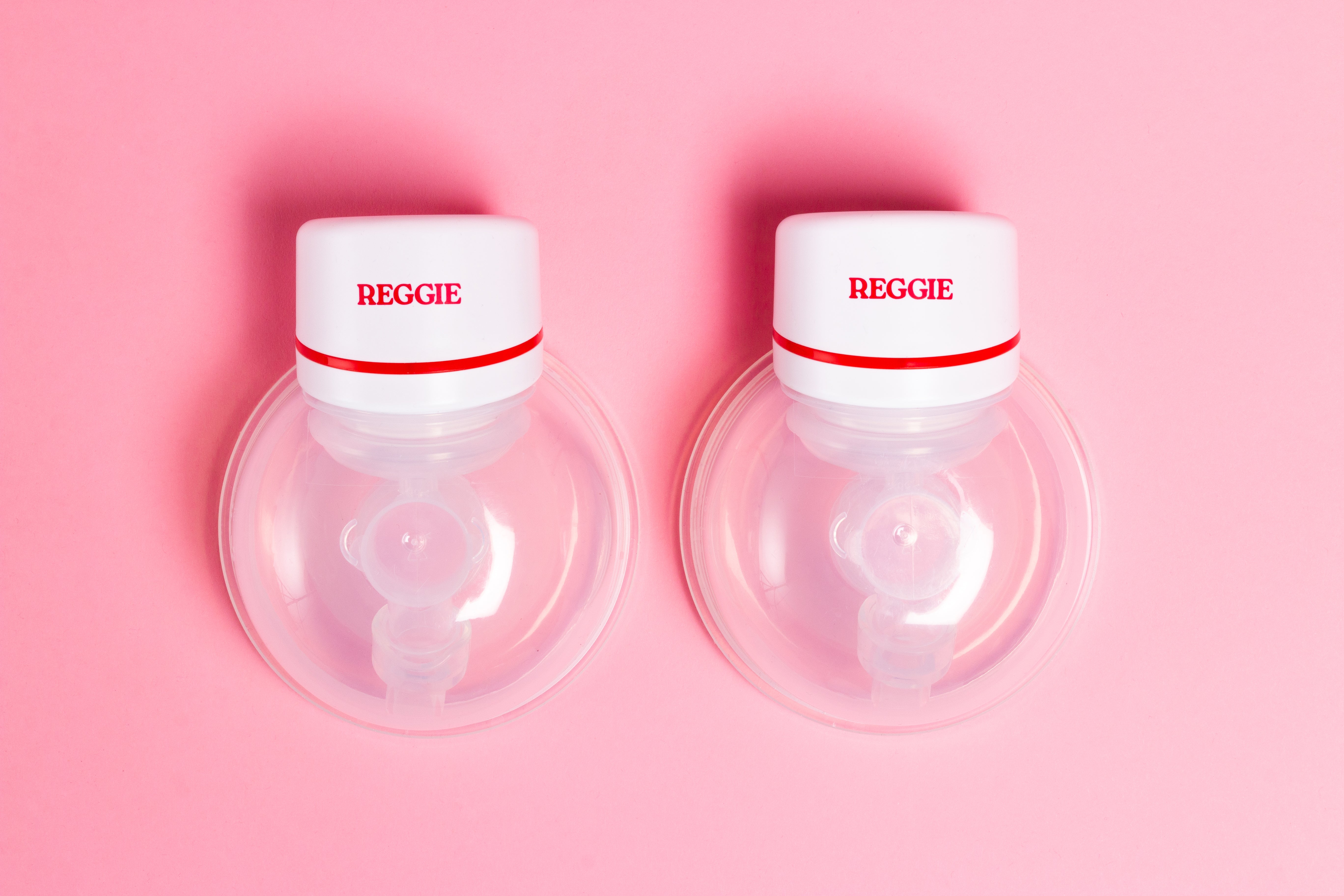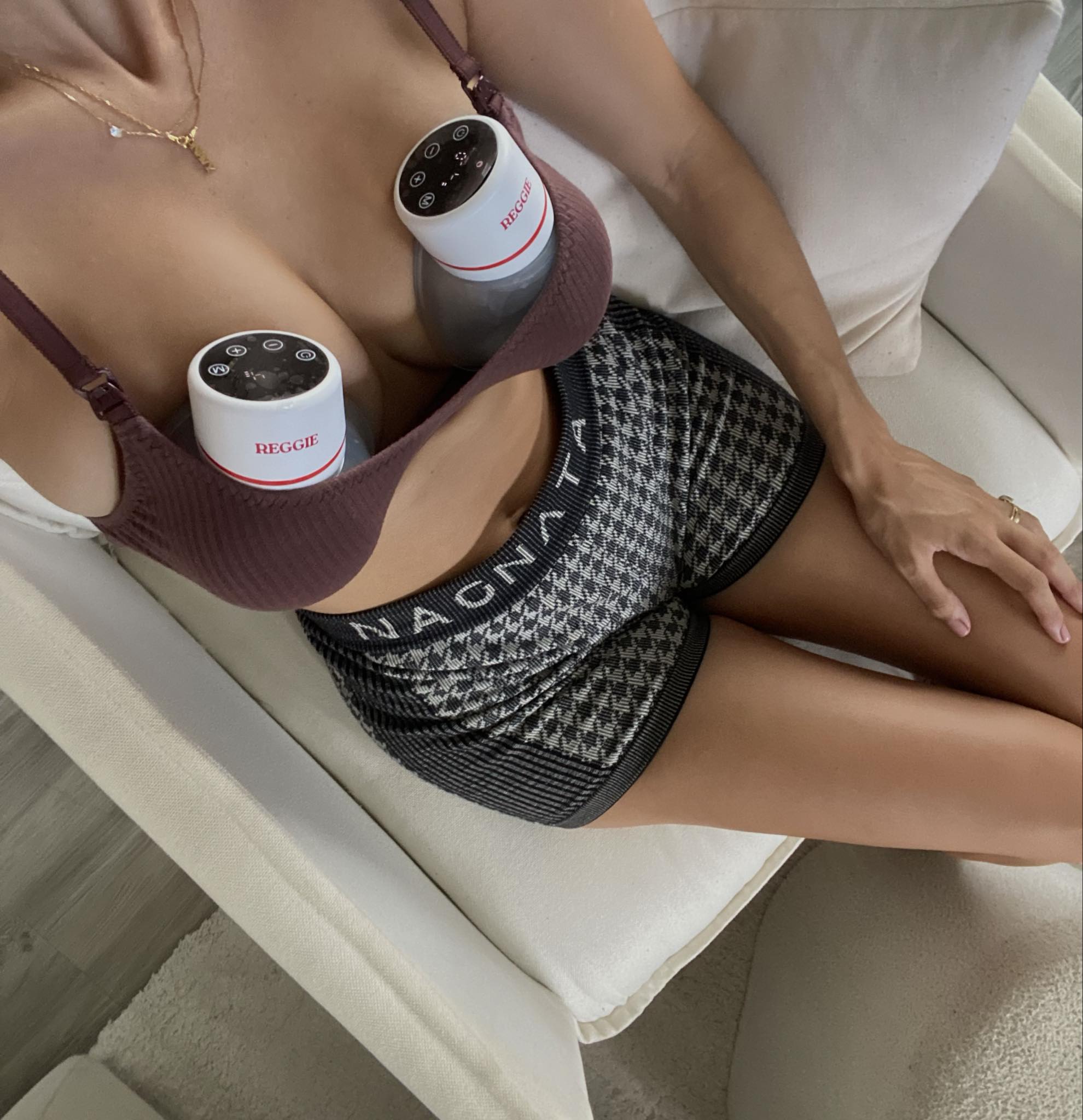Traditional vs Wearable Breast Pumps: Key Differences
Breast pumps come in two main types: traditional and wearable. Choosing the right one can save time, improve comfort, and fit your lifestyle better. Here's a quick breakdown:
- Traditional Pumps: Stronger suction, higher milk output, but bulky and less portable.
- Wearable Pumps: Lightweight, discreet, and mobile, but with gentler suction and smaller milk collection capacity.
Quick Comparison
| Feature | Traditional Pumps | Wearable Pumps |
|---|---|---|
| Design | Separate components | Fits in bra, all-in-one |
| Suction Strength | Stronger | Moderate |
| Mobility | Stationary | Fully mobile |
| Noise Level | 50-60 dB | 30-45 dB |
| Milk Capacity | 4-8 oz per bottle | 2-5 oz per session |
| Cleaning Time | 10-15 mins/session | 5-10 mins/session |
| Cost (Initial) | $150-$300 | $300-$500 |
Key takeaway: Traditional pumps are better for efficiency and milk supply, while wearable pumps offer unmatched convenience and mobility. Many mums find a mix of both types works best for their needs.
Main Differences Between Pump Types
Size and Portability
The physical design of a pump greatly affects how portable it is. Traditional pumps typically weigh between 2-5 pounds and often require multiple components, including tubing and bottles, which are usually carried in a dedicated bag. In contrast, wearable pumps are much lighter, weighing only 0.3-0.5 pounds, and are designed to fit directly into a nursing bra [1][3].
Power Options and Mobility
The power sources for these pumps differ quite a bit. Traditional pumps mostly rely on mains power or car adapters, although some models come with battery options [3][4]. This reliance on external power can limit where and when you can pump.
Wearable pumps, on the other hand, come with built-in rechargeable batteries, allowing for true mobility. Most wearable models can handle 2-3 pumping sessions on a single charge [3][4]. This makes them ideal for discreet pumping while going about daily activities. These differences in power options highlight the mobility benefits wearable pumps offer.
| Power Feature | Traditional Pumps | Wearable Pumps |
|---|---|---|
| Power Source | Mains/car adapter; some battery options | Built-in rechargeable battery |
| Operating Time | Unlimited with mains power | 1.5-2.5 hours per charge |
| Mobility | Limited by power source | Full freedom of movement |
| Noise Level | 50-60 decibels | 30-45 decibels |
Milk Collection Systems
The way milk is collected also sets these pumps apart. Traditional pumps use external bottles connected via tubing, with each bottle holding 4-8 ounces of milk per breast [1][3]. While this allows for larger milk volumes, it requires more assembly and storage space.
Wearable pumps feature built-in collection systems within the pump itself, typically holding 2-5 ounces per session [1][3]. Though the capacity is smaller, the integrated design makes pumping more discreet. Some models, like the Elvie Stride, even come with spill-proof technology, letting users bend, recline, or lie down while pumping [6]. These differences in capacity and design influence pumping frequency, which can be crucial for managing milk supply effectively.
Daily Use and Lifestyle Fit
Office and Workplace Use
The design differences between traditional and wearable pumps significantly influence their practicality in professional settings. Traditional pumps often require a private, dedicated space with access to power, meaning users must schedule specific breaks and locate a suitable room for pumping. This can disrupt work routines and limit flexibility.
On the other hand, wearable pumps like the Elvie Pump provide more freedom. Controlled via smartphone, they allow for discreet pumping during meetings or while working at a desk. In fact, 95% of Elvie users report being able to continue working without interruptions while pumping[3].
| Workplace Consideration | Traditional Pumps | Wearable Pumps |
|---|---|---|
| Privacy Needs | Requires a private room with power | Can be used discreetly in shared spaces |
Movement and Multi-tasking
Traditional pumps come with external components that restrict movement, requiring users to remain seated for 15-20 minutes per session. Wearable pumps eliminate this limitation, allowing full mobility. This feature is especially helpful for multitasking parents who need to move around while pumping. The increased mobility aligns with the differences in collection systems discussed earlier.
Milk Supply Management
Both suction strength and frequency of use are key factors in milk supply management. Traditional pumps, with their stronger suction, are effective at maintaining milk supply. For example, hospital-grade models like the Spectra S1 offer adjustable cycle speeds to closely mimic natural nursing patterns.
Wearable pumps, while sometimes extracting less milk per session, excel in providing more frequent pumping opportunities throughout the day. For some users, this translates to a 20% higher daily milk output when using wearables regularly[3]. Many parents opt to combine both types of pumps, balancing the efficiency of traditional models with the flexibility of wearables. This approach highlights the trade-off between efficiency and adaptability.
Upkeep, Cleaning, and Cost
Maintenance and costs play a key role in deciding how well a pump fits into daily routines, balancing ease of use with affordability.
Cleaning Steps and Time
The cleaning process varies between traditional and wearable breast pumps. Traditional pumps usually require cleaning more components, such as flanges, valves, bottles, and tubing, which takes about 10-15 minutes per session.
Wearable pumps, on the other hand, have fewer parts to clean - typically five compared to nine in traditional pumps - reducing cleaning time to about 5-10 minutes per session[1][4]. However, their compact design might mean cleaning more often to avoid milk residue in tight areas.
| Cleaning Aspect | Traditional Pumps | Wearable Pumps |
|---|---|---|
| Number of Parts | 9 parts average | 5 parts average |
| Daily Clean Time | 10-15 minutes | 5-10 minutes |
| Assembly Time | 3-5 minutes | 1-2 minutes |
| Sterilisation Options | Dishwasher/boiling safe | Limited sterilisation options |
These differences highlight the balance between portability and efficiency discussed earlier.
Part Replacements and Prices
The lifespan and replacement costs of pump components differ greatly. Traditional pumps require parts like membranes and valves to be replaced every 3-6 months, costing around $10-$20 per set[2]. The motor usually lasts 1-2 years, with replacement costs ranging from $100-$150.
Wearable pumps, however, need silicone parts replaced every 3-4 months, with prices depending on the model:
- Valves: $10-$15 each
- Collection cups: $15-$20 each
- Connectors: $10-$12 each
These ongoing costs can add up over time, especially for wearable models.
Insurance and Total Cost
Insurance coverage often leans towards traditional pumps, leaving wearable pump users to shoulder more out-of-pocket expenses. Here's how the costs compare:
| Cost Factor | Traditional Pumps | Wearable Pumps |
|---|---|---|
| Initial Cost | $150-$300 | $300-$500 |
| Annual Maintenance | $50-$100 | $100-$150 |
| Total First Year | $200-$400 | $400-$650 |
Traditional pumps tend to last 3-5 years, while wearable pumps typically need replacing after 1-2 years[1][4]. While traditional pumps are more budget-friendly in the long run, wearable models appeal to those who value privacy and multitasking.
sbb-itb-08733ff
Benefits and Drawbacks
When comparing traditional and wearable breast pumps, each offers its own set of strengths and weaknesses, which can greatly influence a mother's pumping experience.
Side-by-Side Comparison
The main differences between traditional and wearable pumps come into focus when looking at their key features and performance.
| Feature | Traditional Pumps | Wearable Pumps |
|---|---|---|
| Suction Strength | Stronger, adjustable suction[1][3] | Gentler suction[3][4] |
| Milk Output | Higher output per session[3] | May require longer sessions[4][5] |
| Discretion | Requires a private space | Can be worn under clothing |
Traditional pumps stand out in a few key areas. Their powerful motors deliver strong suction, which is especially helpful for mothers dealing with low milk supply[1][3][4]. They are also known for producing higher milk output per session because they can empty the breasts more thoroughly. Being plugged into mains power means you don’t have to worry about batteries running out during long pumping sessions.
That said, traditional pumps do have some downsides. Their bulkier design and reliance on power outlets make them less convenient for mobile use. They also tend to be noisier than wearable pumps, which can be a consideration in certain settings[1][3].
Wearable pumps, on the other hand, are all about convenience and privacy. Their compact design allows for pumping discreetly under clothing, making them a great option for multitasking or pumping in shared spaces. They also operate more quietly, offering an added layer of privacy[1][3].
However, wearable pumps aren’t without their challenges:
- Smaller milk collection capacity[3]
- Positioning issues, which can make it harder to achieve a proper seal[4]
These limitations can add to the maintenance and adjustment efforts, as seen in upkeep and cost comparisons.
For shared workplaces, wearable pumps are often the preferred choice. Ultimately, the decision comes down to individual priorities - whether it’s the efficiency of traditional pumps or the discreet, hands-free nature of wearable ones.
Making Your Choice
Main Points to Remember
Choosing the right pump means weighing portability against performance. Traditional pumps are often better for building milk supply due to their stronger suction power[5].
| Scenario | Recommended Type | Key Benefit |
|---|---|---|
| Full-time office work | Wearable | Easy to use discreetly during meetings |
| Exclusive pumping | Traditional | Optimised for higher milk output |
| Mixed schedule | Hybrid approach | Adapts to varied routines |
| Limited budget | Traditional | Often covered better by insurance[7] |
These suggestions highlight the differences in size, portability, and suction power between pump types.
Finding Your Best Match
Consider how your needs align with pump features:
| Scenario | Recommended Type | Key Benefit |
|---|---|---|
| Full-time office work | Wearable | Easy to use discreetly during meetings |
| Exclusive pumping | Traditional | Optimised for higher milk output |
| Mixed schedule | Hybrid approach | Adapts to varied routines |
| Limited budget | Traditional | Often covered better by insurance[7] |
Experts suggest using a combination of pump types for greater flexibility[1]. Rental programs can be a helpful way to test different models before committing[1].
As your milk production patterns shift (refer to Milk Supply Management), it’s wise to reassess your pump choice to ensure it still meets your needs[5].
FAQs
What are the disadvantages of wearable breast pumps?
While wearable breast pumps offer portability, they often compromise on suction strength and milk output. Here are some of the key limitations:
| Limitation | Impact |
|---|---|
| Suction Power | Weaker compared to traditional pumps [1][4] |
| Limited Insurance Coverage | May lead to higher out-of-pocket costs [3] |
| Learning Curve | Positioning can take practice [4] |
Getting a proper seal can be tricky, echoing the positioning challenges noted earlier.
Are hands-free breast pumps better?
It depends on your needs and lifestyle. Hands-free pumps shine in situations where mobility is essential, such as:
- Pumping discreetly at work
- Managing childcare while pumping
- Pumping on the go [3]
That said, if you're focused on building your milk supply or exclusively pumping, traditional pumps may be more effective due to their stronger suction [5]. Many mothers find a mix of both types helpful, especially when balancing a busy schedule. This approach aligns with the flexibility benefits mentioned in the Daily Use and Lifestyle Fit sections.






Leave a comment